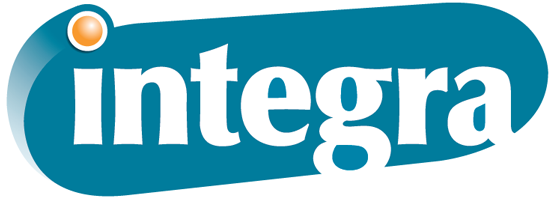Targeted Mailing as a Direct Mail Strategy: An Honest Review
January 27th, 2024 | 4 min read

What’s the best way to reach your most valuable prospects via direct mail? Does targeting your audience by demographic or behavioral traits make sense for your business?
At Integra, we’ve helped hundreds of customers answer these questions and many like them. Targeted direct mail campaigns are a popular strategy, but they’re not the right fit for every business. With other options like addressed saturation, house list mailings and Every Door Direct Mail (EDDM) out there, how can you decide whether targeted mailing is the way to go?
In this post, we’re going to break down the pros and cons of this mailing model to help you make the right decision, not only for your business as a whole, but also for the specific project you have in mind at the moment.
You may find that targeted mailing is a bad fit for next month’s newsletter but the perfect choice for your new product launch. Or perhaps it’s ideal for an event you’re hosting next quarter, but you’d like to reach a broader swath of the population with your product catalog.
Whatever the case may be, after reading this post, you’ll have the information you need to select targeted mailing when and only when it’s likely to work in your favor. So let’s get started with the pros!
Top Benefits of Targeted Mailing Strategies in Direct Mail Campaigns
When you're considering a targeted mailing strategy for your direct mail campaigns, understanding the benefits is crucial. At Integra, we've seen firsthand how this approach can significantly impact our clients' marketing efforts. Let's dive into the top advantages:
- Precision in audience targeting: The most prominent advantage of targeted mailing is its precision. By focusing on specific demographics or behavioral traits, you're able to reach the individuals most likely to be interested in your product or service. This isn't just throwing a wide net and hoping for the best — it's more like using a well-aimed harpoon to catch the right fish.
- Increased relevance and engagement: When your mail reaches the right audience, it resonates more. People are more likely to engage with content that speaks directly to their needs, interests or lifestyle. This increased relevance can lead to higher response rates, making your campaign more effective.
- Efficient budget allocation: Targeted mailing can be more cost-effective in the long run. Yes, purchasing a mail list and crafting a campaign tailored to a specific group might seem costly upfront. However, by reducing waste and focusing your resources on those most likely to convert, you're likely to see a better return on investment.
- Enhanced personalization opportunities: With targeted mailing, you have the chance to personalize your message to a greater extent. Personalization goes beyond just addressing the recipient by name. It's about tailoring the content, offers and imagery to align with the interests and needs of your target audience.
- Measurable results and data collection: Targeted campaigns allow for more precise measurement and data collection. You can track response rates, conversions and other key metrics more effectively, providing valuable insights for future marketing strategies.
- Ability to build long-term customer relationships: By reaching the right people with the right message, you're laying the groundwork for long-term relationships. Customers who feel understood and valued are more likely to become loyal brand advocates.
Some of these benefits can even be boosted if you opt into a “direct mail with intelligence” solution, which will give you the capability to cross-market with both direct mail and digital engagement.
Are you wondering how long it might take to get your targeted direct mail campaign off the ground? Use our turnaround calculator below to get an estimate for your timeline with Integra.
Common Drawbacks to Targeted Mailing Strategies in Direct Mail Campaigns
While targeted mailing has its advantages, you’ll also want to consider the potential downsides. Your business needs to weigh these factors to make an informed decision:
- Initial cost and investment: Acquiring a high-quality targeted mailing list can be expensive. This initial cost can be a barrier, especially for smaller businesses or those with limited marketing budgets. You’ll also need to pay extra for more than one use of the list.
- Risk of data inaccuracy: The success of a targeted mailing campaign hinges on the accuracy of the data used. If the data is incorrect or outdated, your campaign might not reach your intended audience, leading to wasted resources and disappointing results. You can mitigate this potential drawback and some of the other top mail list issues by working with a reputable list company, but the results will always be based on human behaviors and data — or in other words, imperfect.
- Limited reach: By its very nature, targeted mailing is exclusive. While exclusivity is great for focusing on your ideal customers, it also means you might miss out on prospects who fall outside your defined parameters but could still be interested in your offerings. Avoid getting too specific or adding too many filters if you’re worried about this possibility.
- Potential privacy concerns: In today's data-sensitive world, consumers are increasingly aware of how their information is used. There's a fine line between personalized marketing and perceived invasiveness. It's crucial to handle customer data responsibly to maintain trust and comply with privacy regulations.
- Time and effort for segmentation and analysis: Crafting a successful targeted mailing campaign requires significant time and effort. You need to segment your audience, analyze data and create tailored content. The process can be resource-intensive, especially for businesses without a dedicated marketing team.
As long as you understand the drawbacks of targeted mailing, you’ll be making a decision based on all the facts. Some of these cons may not apply to your business, but any that do should be discussed with your team and carefully deliberated over.
Does Targeted Mailing Make Sense as Your Next Mailing Strategy?
In exploring the intricacies of targeted mailing, you've gained insights into a strategy that balances precision and effectiveness with some potential challenges. This exploration of both the pros and the cons is more than just an academic exercise — it's a practical guide to making informed decisions in the complex world of direct mail marketing.
With this newfound understanding, the choice of whether to implement targeted mailing in your campaigns should be a bit clearer. It's a decision that hinges not just on the potential for finely-tuned audience engagement, but also on the practicalities of budget, resources and the specific goals of your business.
If you’re still deciding, you can see how we weigh this option against two of its top alternatives with the following links:
- Every Door Direct Mail (EDDM) vs Targeted Mailing — Which Is Right for You?
- Addressed Saturation vs. Targeted Mailing: Which Is Right for You?
If you think targeted mailing is the right path for your business’s success, you might be ready to get started on your new direct mail project. To reach an Integra representative with expertise in both print and mail marketing, click below!
Topics:



